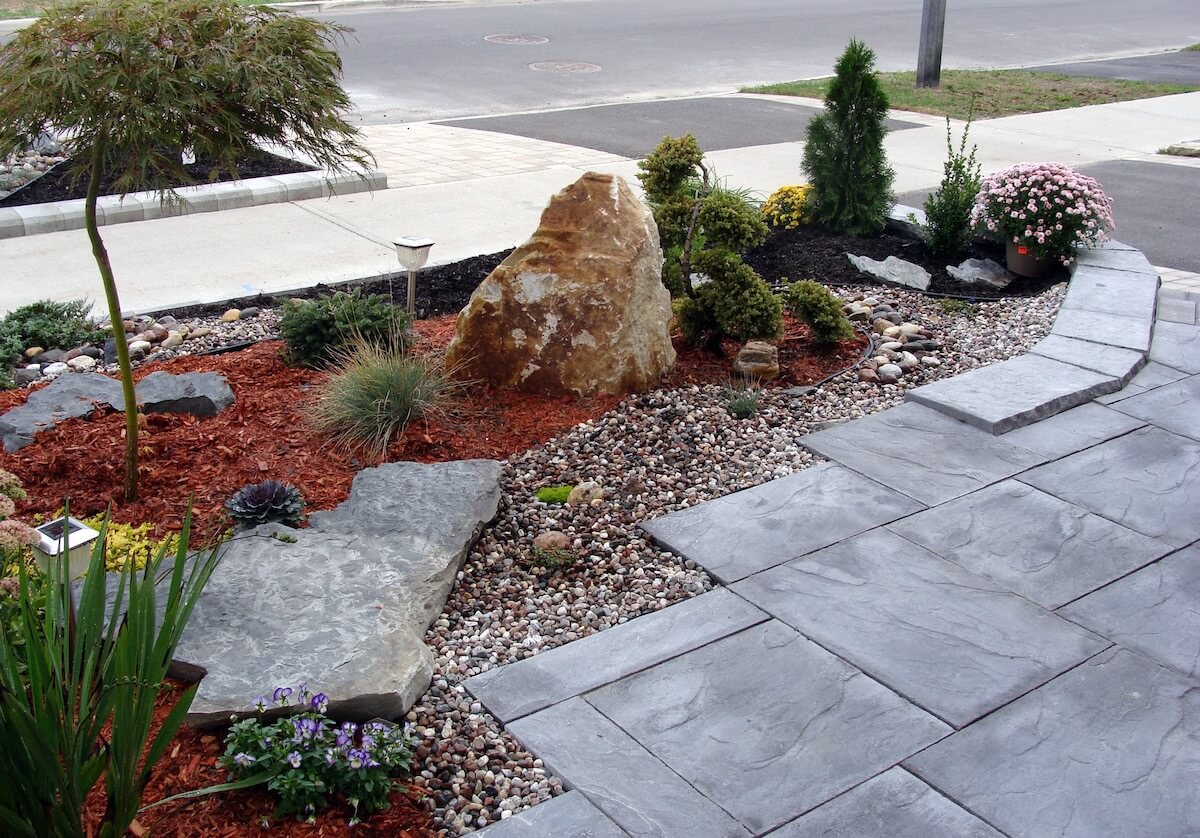New to landscaping with rock and stone? Whether you’re tackling a DIY backyard project or planning a complete landscape overhaul, understanding the basics of rock landscaping can make all the difference. In this beginner-friendly guide, we’ll break down the types of materials available, where to use them, and how to get started.
What Are the Benefits of Using Rock in Landscaping?
- Low Maintenance: Rocks don’t decay, attract pests, or need frequent replacement like organic mulch.
- Durable: Great for long-term solutions, especially in high-traffic or harsh climate areas.
- Water-Wise: Ideal for drought-prone areas like Southern California; reduces the need for irrigation.
- Aesthetic Variety: Available in a range of colors, sizes, and textures to suit any design style.
Landscaping with rock also gives you more creative flexibility. You can build structures, add elevation changes, or craft artful patterns using different rock types.
Common Types of Landscaping Rocks
- Gravel: Small, affordable, and versatile. Great for driveways, patios, and utility areas.
- Decomposed Granite (DG): A fine, compactable material that creates smooth surfaces for walkways and patios.
- River Rock: Rounded stones in various sizes and colors. Ideal for dry creek beds, edging, and drainage.
- Lava Rock: Lightweight and porous, often used as decorative mulch around plants. Retains moisture without breaking down.
- Cobble & Boulders: Larger stones that act as visual anchors, retain slopes, or frame garden areas.
- Crushed Rock: Angular stones that lock together well. Excellent for base layers, driveways, or decorative ground cover.
Where to Use Landscaping Rocks
- Pathways and Driveways: DG or gravel can replace concrete for a more natural and permeable solution.
- Garden Beds and Borders: Rock mulch enhances visual appeal and helps prevent weeds.
- Drainage Areas: River rock is perfect for managing water runoff and preventing erosion.
- Accent Features: Use large stones or mixed textures to draw the eye and define focal points.
- Fire Pit Zones: Gravel or pea gravel creates a safe, stylish base around fire pits and seating areas.
Getting Started: Tips for Beginners
- Plan Your Layout: Sketch your space and decide how each area will be used.
- Pick the Right Rock Type: Match the material to your functional and aesthetic goals.
- Measure Your Area: Length × Width × Depth will help determine how much rock to order.
- Prepare Your Site: Clear the area, level the ground, and consider using landscape fabric.
- Install Carefully: Spread rocks evenly, tamp if needed, and use edging materials to hold shape.
- Add Finishing Touches: Complement your rockwork with drought-tolerant plants, lighting, or garden art.
Pro Tips:
- Always round up your material estimates to account for settling or miscalculations.
- Consider layering textures for added depth—like gravel paths bordered by larger cobble or boulders.
- Use a weed barrier to minimize maintenance and keep rocks clean.
Your Rock Landscaping Journey Starts Here
Landscaping with rock and stone is one of the easiest and most rewarding ways to upgrade your outdoor space. Whether you’re looking for a budget-friendly solution or a bold design statement, US Rock has the right materials to get you started. Explore our full selection at usrock.com, or reach out to our friendly team for expert advice and custom product recommendations!

